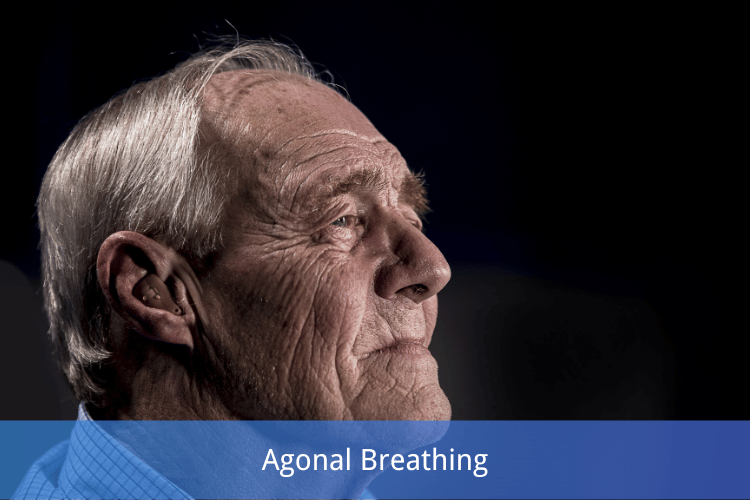
Introduction: What Is Agonal Breathing?
If you’ve ever seen someone gasping for air in a medical emergency, you may have witnessed agonal breathing—a frightening but critical sign of severe oxygen deprivation. Unlike normal breathing, agonal respirations are ineffective, gasping breaths triggered by the brainstem when the body is in extreme distress.
This phenomenon is most commonly associated with cardiac arrest, traumatic brain injury, or near-death situations, and recognizing it can be the difference between life and death. In this guide, we’ll explore:
- The key characteristics of agonal breathing
- Its underlying causes and medical significance
- How it differs from other abnormal breathing patterns
- What to do if you witness it
- Ethical considerations in end-of-life care
By the end, you’ll understand why agonal breathing is a medical emergency—not just a distressing symptom—and how proper response can save lives.
What Does Agonal Breathing Look and Sound Like?
Agonal breathing is not true respiration—it’s a reflexive, gasping attempt by the brain to restore oxygen when the body is failing. Key signs include:
- Slow, irregular gasps (often 5–10 seconds apart)
- Grunting or moaning (due to involuntary vocal cord spasms)
- Weak or absent chest movement (the breaths don’t fully inflate the lungs)
- No responsiveness (the person is unconscious)
Agonal Breathing vs. Death Rattle
A common misconception is confusing agonal breathing with the "death rattle"—a wet, gurgling sound caused by saliva pooling in the throat of dying patients. Unlike agonal gasps, the death rattle:
- Is not a breathing effort
- Does not involve oxygen intake
- Occurs when a patient is already near death
Causes: Why Does Agonal Breathing Happen?
Agonal breathing is always a symptom of a life-threatening condition, including:
1. Cardiac Arrest (Most Common Cause)
- When the heart stops, the brain loses oxygen within seconds.
- The brainstem triggers gasping as a last-ditch survival reflex.
- 40% of out-of-hospital cardiac arrests involve agonal breathing.
2. Severe Brain Trauma or Stroke
- Damage to the brainstem (which controls breathing) disrupts normal respiration.
- Seen in massive strokes, head injuries, or brain hemorrhages.
3. Drug Overdose (Especially Opioids)
- Opioids suppress the brain’s respiratory drive, leading to oxygen deprivation.
- Agonal gasps may occur before full respiratory arrest.
4. Drowning, Suffocation, or Carbon Monoxide Poisoning
- Sudden oxygen deprivation triggers brainstem reflexes.
Agonal Breathing vs. Other Abnormal Breathing Patterns
| Breathing Pattern | Description | Medical Cause |
|---|---|---|
| Agonal Breathing | Gasping, irregular, ineffective breaths | Cardiac arrest, brain injury |
| Cheyne-Stokes | Crescendo-decrescendo (waxing/waning breaths) | Heart failure, brain damage |
| Kussmaul Breathing | Deep, rapid breaths (acidosis compensation) | Diabetic ketoacidosis |
| Apneustic Breathing | Prolonged inhalations with pauses | Brainstem injury |
Key Takeaway: Agonal breathing is not sustainable—it’s a pre-terminal sign requiring immediate intervention.
What to Do: Emergency Response
If you witness agonal breathing:
-
Check for Responsiveness
- Shout and shake the person. No response? Call emergency services.
-
Assess for a Pulse
- No pulse? Begin CPR immediately—even if gasping continues.
-
Use an AED if Available
- Agonal breathing often accompanies shockable cardiac rhythms.
-
Do Not Assume Breathing Means Recovery
- Agonal gasps do not supply oxygen—keep CPR going until help arrives.
Survival Rates
- Bystander CPR doubles survival chances in cardiac arrest with agonal breathing.
- Without intervention, agonal respirations cease within minutes, leading to brain death.
Agonal Breathing in End-of-Life Care
In palliative or hospice care, agonal breathing can distress families who mistake it for suffering. Key facts:
- It is not painful—the brain is too oxygen-deprived for consciousness.
- Comfort measures (morphine, oxygen, repositioning) may ease family anxiety.
- Resuscitation is often inappropriate in terminal cases—focus shifts to dignity.
FAQ: Common Questions About Agonal Breathing
Q: What is agonal respiration?
A: Agonal respiration refers to a pattern of breathing characterized by gasping or labored breathing that often occurs during a medical emergency, particularly in cases of cardiac arrest or severe hypoxia.
Q: How can one recognize agonal breathing?
A: Signs and symptoms of agonal breathing include irregular gasps, an abnormal pattern of breathing, and labored breaths that are not effective in delivering oxygen, often observed in patients with cardiac arrest.
Q: Is agonal breathing the same as true breathing?
A: No, agonal breathing isn’t considered true breathing. It is a reflexive response that occurs in a state of severe medical distress, typically indicating that the person’s life is in jeopardy.
Q: What should someone do if they witness agonal respiration?
A: If you encounter a person exhibiting agonal respiration, it is crucial to call emergency services immediately and commence basic life support, including chest compressions, while awaiting the arrival of a dispatcher or medical assistance.
Q: Can agonal respiration occur near the end of life?
A: Yes, agonal breathing can occur in patients near the end of life, often referred to as the "death rattle," indicating that death is imminent and the body is shutting down.
Q: How is agonal breathing related to cerebral ischemia?
A: Agonal breathing may result from cerebral ischemia, a condition where the brain is deprived of oxygen, often due to a heart rhythm disturbance or cardiac arrest, leading to ineffective respiratory efforts.
Q: What role does mechanical ventilation play in cases of agonal breathing?
A: Mechanical ventilation may be employed in a medical emergency to assist patients who are unable to breathe effectively due to conditions such as cardiac arrest; however, it is not a solution during agonal respiration if the heart is not functioning.
Q: What is the importance of recognizing the presence of agonal breathing in medical emergencies?
A: Recognizing the presence of agonal breathing is vital as it indicates a critical state requiring immediate intervention, such as administering chest compressions and activating emergency medical services to potentially save the person’s life.
Q: How does arrhythmia relate to agonal respiration?
A: Arrhythmia can lead to cardiac arrest, which may subsequently result in agonal respiration as the body struggles to supply oxygen to vital organs, emphasizing the need for rapid response in such scenarios.
Q: What should be done if the agonal breathing pattern continues without improvement?
A: If the pattern of breathing continues without improvement, it is essential to maintain chest compressions and continue to provide life support measures until professional medical help arrives, as this can be crucial for patient survival.
The Bottom Line: Why Recognition Matters
Agonal breathing is a medical emergency, not just a distressing symptom. Whether in cardiac arrest, trauma, or overdose:
- Immediate CPR/AED use saves lives.
- Bystander action is critical—don’t wait for professionals.
- In end-of-life cases, understanding its reflexive nature reduces family distress.
For medical professionals and the public alike, recognizing agonal breathing ensures swift, life-saving responses when seconds count.



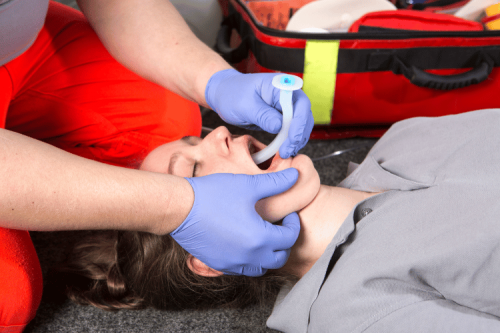
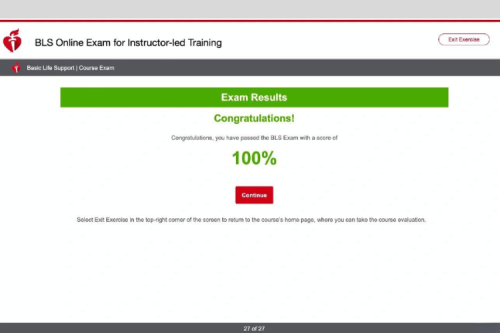
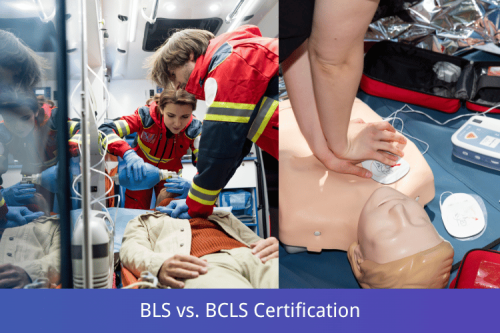
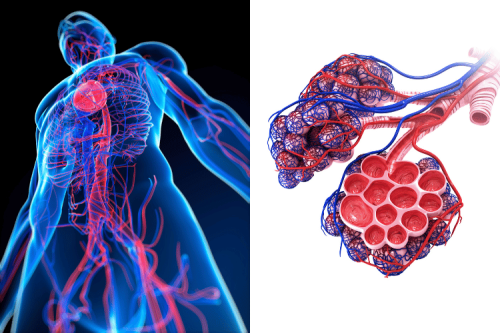

 Login with Google
Login with Google Login with Facebook
Login with Facebook